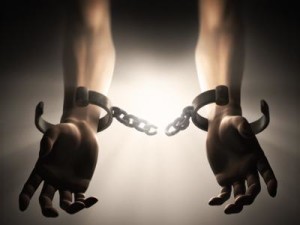My idle thoughts on tech startups
PayPal Unshackled – Now Is the Time
 eBay announced today plans to separate itself into two companies, one the core eBay marketplace business and the other is the PayPal payments business. This is a move that’s been contemplated by folks both inside the company and outside for many years. Recently prominent activist shareholders have also been “encouraging” eBay management to spin off PayPal as a way to maximize shareholder value.
eBay announced today plans to separate itself into two companies, one the core eBay marketplace business and the other is the PayPal payments business. This is a move that’s been contemplated by folks both inside the company and outside for many years. Recently prominent activist shareholders have also been “encouraging” eBay management to spin off PayPal as a way to maximize shareholder value.
First let me say that it’s made a lot of sense for the two companies to be a combined entity over the last 12 years. When we sold PayPal to eBay in 2002 we had just gone public earlier that year. The business was strong and profitable (>$100M revenue, gross margins 50%+), but PayPal also faced challenges… diversifying beyond eBay sellers (many sell both on and off eBay), increased regulation, continued international expansion, etc. Being part of eBay helped PayPal tackle all of these things, plus it allowed PayPal to continue capturing payment share within eBay (today >70% of all eBay transactions closed with PayPal). eBay’s marketplace cashflows also provided capital to grow the PayPal business.
We had an immensely talented and entrepreneurial team at PayPal which famously went on to build many other businesses (the PayPal mafia). But in all candor it’s not obvious that we would have been best positioned to build PayPal as a public company for a decade. The payments landscape was different back then… Visa and MasterCard were not-for-profit consortiums owned and controlled by the largest banks. The “smartphone” consisted of Palm Treos and early Blackberries.
So all in all, eBay’s acquisition of PayPal was good for PayPal and great for eBay and the two as a combined entity made a lot of sense for a long time. But for PayPal to maximize it’s potential as a payments platform the company must be unshackled by eBay. Today’s payments landscape is far more dynamic… Visa and MasterCard are publicly traded companies themselves. As incumbents they’re still not terribly forward thinking, but they’re more innovative today than they were a decade ago. There are obviously other companies that have attempted and largely failed to build meaningful payments businesses (e.g. Google, Amazon) and now others like Apple that will try. Crypto currencies are still in their infancy but regardless of whether Bitcoin ever becomes a widespread medium of exchange, the blockchain has significant potential to change the way transactions are conducted and how counterparties interact.
There are two things that are incredibly hard to do but are essential to building a valuable payments company. One is to build large scale consumer adoption + merchant acceptance… we did this at PayPal by piggybacking on the growth of eBay’s marketplace, and as a combined entity PayPal pushed strongly into offline payments. The most remarkable thing that PayPal achieved, and what it makes it different than pretty much every other attempt at payments innovation, has been to create a lower cost source of funding for digital transactions. We did this by getting consumers comfortable with funding via bank account (ACH) and by building innovative and robust risk management systems to deal with all the inherent limitations of ACH (not real time, no guarantee of sufficient funds, etc). We did this out of necessity back when PayPal was still a private company. Had PayPal relied solely on credit cards for funding buyers’ transactions, we would have probably failed on multiple dimensions… it would have been extraordinarily difficult to build a profitable business and the credit card associations cumbersome rules (and at times adversarial approach to PayPal) may very well have put us out of business.
The opportunity and challenge for PayPal going forward will be to take this competitive advantage and further extend the usage of PayPal into online and offline transactions. People frequently fixate on “mobile” as being the next big thing in payments… we’d all like to be able to use our smartphone as the payment token rather than a plastic rectangle with a magnetic stripe. But the grand slam opportunity isn’t simply to use a phone tied to a credit card account (as Apple Payments is attempting to do), it’s to tie a mobile app to other ubiquitous stores of value as PayPal can do with bank accounts or credit accounts (old BillMeLater). Unshackled, PayPal has a shot at this now.
